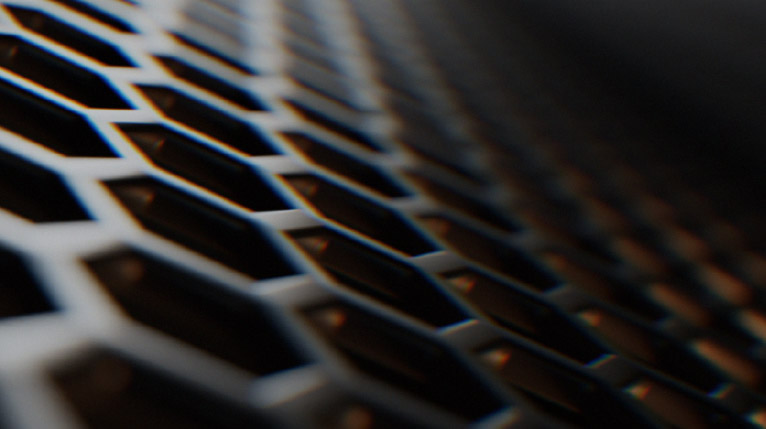World Leader in Solid Oxide Technology
- More than 20 years of experience in manufacturing, developing, operating, and maintaining the technology
- Bloom owns and operates the world’s largest SOEC and most efficient commercial-scale electrolyzer, located in NASA’s Ames Research Center in Mountain View, California
- World’s largest electrolyzer gigafactory in Fremont, California that is approaching 3GW of annual electrolysis manufacturing capacity
- More than 2GW of electrolyzer equivalent solid oxide systems operating in the field over 1000+ installations
- More than 1 trillion solid oxide cell operating hours
Hydrogen Electrolyzers for a Clean Energy Future
Hydrogen is critically important to decarbonize the energy economy. Solid oxide electrolysis reduces the cost to produce hydrogen fuel.
Efficiency is Critical to Achieve Decarbonization Targets
The cost to produce hydrogen fuel via electrolysis is driven primarily by a single variable: the cost of electricity. Because electricity costs have the biggest impact on the financial viability of clean hydrogen, it is imperative that hydrogen electrolyzers consume as little electricity as possible. Researchers at Idaho National Laboratory (INL) have been conducting a variety of tests on Bloom Energy’s solid oxide electrolyzer at the Dynamic Energy Testing and Integration Laboratory.
Running at high temperatures and high availability, the pilot results reveal the Bloom Electrolyzer is producing hydrogen at 37.5 kWh per kilogram of hydrogen at the system level. Alternative electrolyzer technologies, such as PEM or Alkaline, consume as much as 52 – 54 kWh per kilogram of hydrogen produced.
Learn more about the impact of efficiency on system economics by contacting us.
Meet Bloom’s Hydrogen Electrolyzer
Our solid oxide electrolyzer technology can be paired with renewable energy sources to create clean, low-cost hydrogen with industry-leading efficiency.
Our solid oxide electrolyzer is built on the same platform as our Energy Server. The scale, experience, reliability and manufacturing capabilities that went into deploying over 1 GW of solid oxide fuel cells directly translate to our solid oxide electrolyzer.
How Solid Oxide Electrolysis Works
Electrolysis is a process that uses electrical energy to break water molecules into hydrogen and oxygen.
A solid oxide electrolysis cell (SOEC) consists of an anode, a cathode, and an electrolyte.
The electrolyte itself is a solid ceramic material and the anode and cathode are made from special inks that coat the electrolyte and facilitate an electrochemical pathway to produce hydrogen from renewable electricity.
High operating temperatures of solid oxide cells provide a greater overall efficiency than alternative technologies, thus requiring far less electricity to facilitate the reaction.

Benefits of Bloom’s Hydrogen Electrolyzer
Efficient
- Lowest energy needed to convert water to Hydrogen
- More efficient than alternative technologies like PEM and alkaline fuel cells

Reliable
- Modular design with redundancy
- 99% Availability
- Concurrent maintainability

Proven
- Decades of experience in the solid oxide platform
- 2 GW of SOEC equivalent deployed
- 2+ GW of MGH capacity

Lowest Cost
- Fastest learning rate with a 28% cost reduction for doubling of capacity
- Lowest levelized cost of Hydrogen
Technology Comparison
The Solid Oxide Electrolysis Advantage
| PEM Electrolysis | Alkaline Electrolysis | Solid Oxide Electrolysis | |
|---|---|---|---|
| Description | Based on polymer membrane on a plate under high voltage and high current | Production reaction occurring in liquid alkaline solution | Solid ceramic material as electrolyte operating at high heat to reduce electrical needs |
| Materials Availability | Limited (PGMs) |
High | High (Robust supply chain) |
| Efficiency (kWh/kg) | 52 | 54 | 37-44 |
| Estimated learning rate | 13% | 9% | 28% |
| Developing | Mature | Mature |
Unlock the Hydrogen Economy
Access the data sheet below to learn more about the world’s most efficient hydrogen electrolyzer or complete the form to hear from one of our team members.
News
Bloom Energy Unveils Electrolyzer to Supercharge the Path to Low-Cost, Net-Zero Hydrogen
SAN JOSE, Calif., July 14, 2021 – Bloom Energy (NYSE: BE) today unveiled the Bloom Electrolyzer; the most energy-efficient electrolyzer to produce clean hydrogen to date and 15 to 45 percent more efficient than any other product on the market today.




